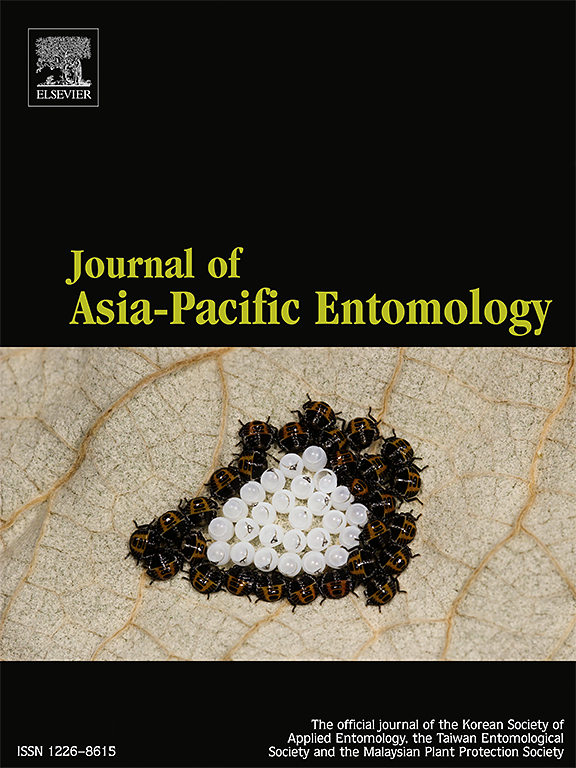液相色谱-质谱分析揭示了蜜蜂幼虫-蛹转化过程中的代谢动力学
IF 1.1
3区 农林科学
Q3 ENTOMOLOGY
引用次数: 0
摘要
存在于蜜蜂血淋巴中的代谢物在调节蜜蜂体内的变质过程中起着至关重要的作用。然而,在蜜蜂幼虫到蛹的蜕变过程中,代谢物组成的精确改变,以及相关的变异和调控途径,仍然没有完全阐明。本研究采用液相色谱-质谱联用技术(LC-MS)对采食期、蛹期和蛹期三个不同生理阶段的蜜蜂幼虫进行了血淋巴分析。利用主成分分析(PCA)和偏最小二乘判别分析(PLS-DA),我们发现了显著的差异代谢物,并对蛹前和蛹期差异上调的代谢物进行了代谢途径分析。值得注意的是,预蛹期幼虫血淋巴中代谢物上调主要控制葡萄糖代谢和脂肪消化吸收,而蛹期代谢物上调主要参与调节几丁质和脂多糖前体的形成,以及苯丙氨酸、酪氨酸和色氨酸的生物合成。这些发现对推进我们对蜜蜂变质过程的理解具有重要意义。本文章由计算机程序翻译,如有差异,请以英文原文为准。

LC-MS profiling reveals metabolic dynamics in Apis mellifera worker bee larvae–pupae transition
Metabolites present in the hemolymph of honey bees play a crucial role in modulating the metamorphic process within the species. However, the precise alterations in metabolite composition, along with the associated variances and regulatory pathways implicated during the larvae-to-pupae metamorphosis of honey bees, remain incompletely elucidated. In this investigation, we gathered hemolymph samples from honey bee larvae of Apis mellifera at three distinct physiological stages-feeding, prepupae, and pupae and subjected them to metabolite analysis utilizing the liquid chromatography-mass spectrometry (LC-MS) technique. Employing principal component analysis (PCA) and partial least squares-discriminant analysis (PLS-DA), we identified significant differential metabolites and conducted a metabolic pathway analysis on those differentially up-regulated during the prepupae and pupae stages. Notably, metabolites up-regulated in the hemolymph of prepupae stage larvae primarily governed glucose metabolism and fat digestion and absorption, while those in pupae stage were involved in regulating chitin and lipopolysaccharide precursor formation, as well as the biosynthesis of phenylalanine, tyrosine, and tryptophan. These findings bear significant implications for advancing our comprehension of the metamorphic processes in honey bees.
求助全文
通过发布文献求助,成功后即可免费获取论文全文。
去求助
来源期刊

Journal of Asia-pacific Entomology
Agricultural and Biological Sciences-Insect Science
CiteScore
2.70
自引率
6.70%
发文量
152
审稿时长
69 days
期刊介绍:
The journal publishes original research papers, review articles and short communications in the basic and applied area concerning insects, mites or other arthropods and nematodes of economic importance in agriculture, forestry, industry, human and animal health, and natural resource and environment management, and is the official journal of the Korean Society of Applied Entomology and the Taiwan Entomological Society.
 求助内容:
求助内容: 应助结果提醒方式:
应助结果提醒方式:


